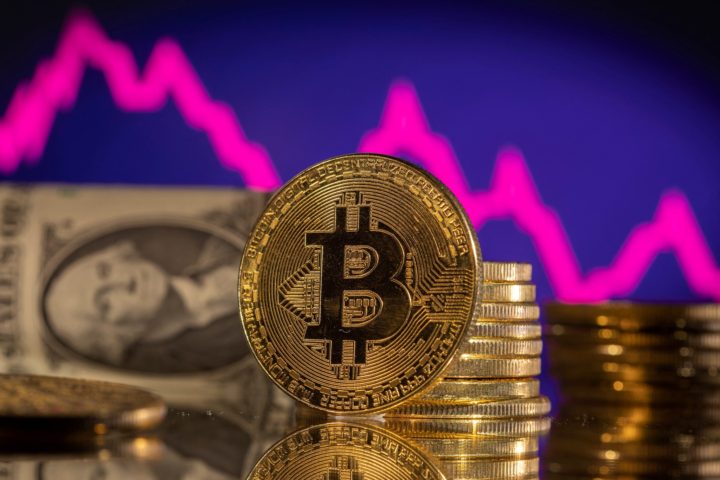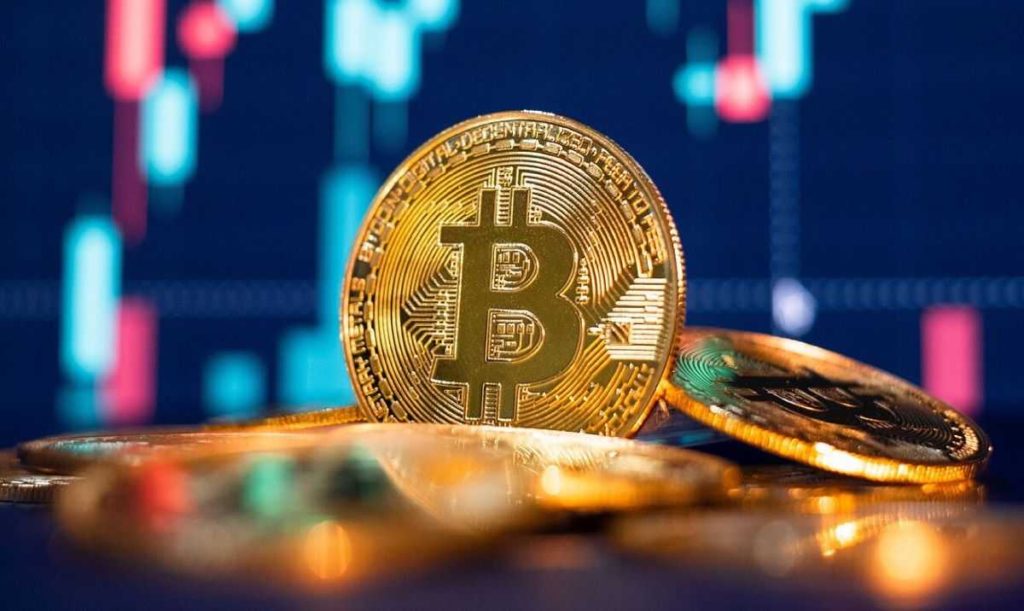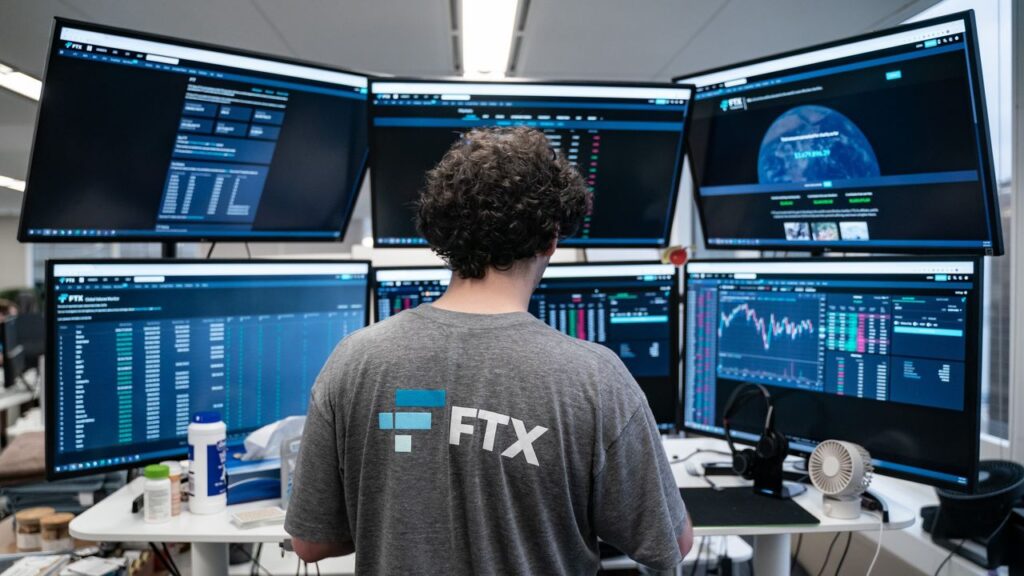The Nigeria Police Force (NPF) has reported the arrest of a prominent politician, Wilfred Bonse, in connection with the theft of more than 200 million naira (equivalent to $246,153) from Patricia Technologies’ cryptocurrency wallet.
The revelation came from Olumuyiwa Adejobi, the spokesperson for the police force, who issued an official statement on Friday.
It is alleged that Bonse played a pivotal role in aiding hackers in the laundering of 50 million naira (about $61,538) from the pilfered funds.
According to Adejobi, the NPF, working in collaboration with its National Cybercrime Center, has made significant strides in the investigation of the Patricia Technologies case.
The case involves a range of criminal activities, including conspiracy, unauthorized alterations to computer systems and network data, and the illicit diversion of funds exceeding 200 million naira (approximately $246,153).
These allegations were presented in a petition submitted to the Inspector General of Police.
The police spokesperson’s statement went on to specify that Bonse has been apprehended for his alleged involvement in the theft, the conversion of cryptocurrency wallets, and the unauthorized diversion of funds from Patricia Technologies.
The statement also outlined the purported participation of several individuals, some of whom are still at large.
READ MORE: Montenegro Court Approves Extradition of Terraform Labs Co-Founder Do Kwon
Bonse stands accused of conspiring to launder 50 million naira resulting from the fraudulent diversion of 607 million naira (equivalent to $747,076) from Patricia Technology’s account to his bank account via a cryptocurrency wallet. The investigation into this matter remains ongoing.
The arrest of Bonse in connection with the Patricia Technologies heist potentially brings some relief to the cryptocurrency trading company, which faced substantial scrutiny following a hacking incident in May, resulting in a significant loss of customer funds.
In response to customer concerns, Patricia converted the value of customer assets into its native Patricia Token (PTK), guaranteeing future repayment.
Patricia reiterated its commitment to maintaining integrity and customer trust, introducing PTK as an internal customer holding.
Patricia has undertaken to reimburse holders with 1 Tether token for each Patricia Token, ensuring the recovery of assets following the security breach.
It is important to note that PTK operates as an internal token representing debt and is managed by the company, rather than being on a public blockchain.
In an effort to address client anxieties, Patricia revealed in October that it had enlisted DLM Trust as an escrow agent for the distribution of customer repayments.
However, DLM Trust subsequently withdrew due to disagreements with the company. Patricia intends to proceed with the repayment schedule later this month.
In a world often consumed by individualism and consumerism, charity initiatives stand as a testament to our inherent humanity.
However, the trust in charitable organizations and nonprofits has witnessed a significant decline in recent years, jeopardizing the noble causes they support.
Many businesses and individual influencers have harnessed the power of philanthropy for branding and promotion, sometimes neglecting the crucial task of ensuring that their contributions reach their intended destinations.
The “Trust in Civil Society” report by Independent Sector sheds light on this disturbing trend, revealing a substantial decline in trust in nonprofits and philanthropy among U.S. citizens in 2023 compared to 2020.
Similarly, the Charity Commission of England and Wales reports a decline in the percentage of people who view charity as ‘very important’ in the UK, dropping from 72% in 2008 to a mere 56% in 2023.
Amidst this crisis of trust, blockchain technology emerges as a beacon of hope, capable of restoring faith in charity endeavors.
Blockchain’s core feature, decentralization, empowers communities and diminishes the reliance on intermediaries.
This translates to enhanced transparency, borderless interactions, and cost-effective and swift transactions.
Charities and nonprofits can harness the potential of blockchain and Web3 technologies to enhance transparency and expand their outreach:
- Transparency: Blockchain can establish a transparent donation process, allowing donors to track where their contributions are directed.
- Supply Chain Monitoring: Decentralized networks can monitor the entire supply chain, ensuring resources efficiently reach those in need.
- Results Tracking: With Web3 technologies, donors can monitor the impact of their funding, ensuring tangible results.
Furthermore, decentralized autonomous organizations (DAOs) governed by communities can mitigate the risk of mismanagement in the charity sector.
READ MORE: Australian Tax Regulator’s Cryptocurrency Tax Guidance Leaves DeFi Users in the Dark
One shining example of blockchain’s impact on charity is Uno Farm, a cross-chain yield farming ecosystem committed to social causes. Uno Farm allocates a portion of its funds to charitable initiatives, resembling corporate social responsibility but with an equitable distribution of resources.
Recently, Uno Farm sponsored the Humans Care Foundation Water (HCF Water) to build a well in Uganda, benefiting over 1,000 people.
HCF leverages blockchain technology to ensure the credibility and transparency of transactions, offering various reports, including visual evidence and banking statements.
The journey of this initiative in Uganda was meticulously documented, enhancing the transparency of the entire process.
Max, the chief product officer at HCF, emphasized, “We believe that the right way of using blockchain technology can take almost every field to the next level, and we prove it on charity.”
Uno Farm’s commitment to social responsibility and charity reflects the transformative potential of Web3 technologies in philanthropy.
In addition to their charitable endeavors, Uno Farm empowers individuals to engage in DeFi yield opportunities.
Their partnership with DEX aggregator 1inch introduces the Single Asset Entry feature, simplifying yield farming for individuals of all experience levels.
In conclusion, blockchain projects like Uno Farm exemplify the potential for transparency and credibility within the charity sector.
By harnessing blockchain technology, these initiatives ensure that donations are used effectively, ultimately restoring trust in charities and inspiring more people to contribute to meaningful causes.
In just four days since its launch, the Web3 protocol Blast network has amassed over $400 million in total value locked (TVL), as per data from blockchain analytics platform DeBank.
However, concerns about the network’s security have been raised by Polygon Labs developer relations engineer Jarrod Watts in a November 23 social media thread.
Watts argues that Blast’s centralization poses significant security risks.
In response to Watts’ criticism, Blast issued a statement on its X (formerly Twitter) account, defending its decentralization claims.
They asserted that their network is as decentralized as other layer 2 solutions like Optimism, Arbitrum, and Polygon.
Blast network touts itself as “the only Ethereum L2 with native yield for ETH and stablecoins,” allowing users’ balances to be “auto-compounded” and stablecoins to be converted into “USDB,” a stablecoin that auto-compounds through MakerDAO’s T-Bill protocol.
However, technical documentation explaining the protocol’s workings has yet to be released, with the promise of publication accompanying an airdrop in January.
Watts’ original post raised concerns that Blast’s security is compromised as it relies on a 3/5 multisig mechanism.
If an attacker gains control of three out of five team members’ keys, they could potentially steal all the crypto deposited into its contracts.
Watts also pointed out that Blast contracts can be upgraded through a Safe (formerly Gnosis Safe) multisignature wallet account, requiring three out of five signatures.
READ MORE: Australian Tax Regulator’s Cryptocurrency Tax Guidance Leaves DeFi Users in the Dark
If these private keys are compromised, an attacker could upgrade the contracts and transfer the entire $400 million TVL to their account.
Furthermore, Watts contested Blast’s classification as a layer 2 solution, asserting that it merely “accepts funds from users” and “stakes users’ funds into protocols like LIDO” without utilizing a bridge or testnet for these transactions.
He also highlighted the lack of a withdrawal function, relying on trust in developers to implement it in the future.
Despite these vulnerabilities, Watts expressed doubt that funds would be stolen but cautioned against sending funds to Blast in its current state.
Blast defended its security posture, explaining that it employs upgradeable contracts to address potential vulnerabilities.
They emphasized the security measures in place, including storing Safe account keys in cold storage, managed by an independent party and geographically separated.
The debate over upgradeable contracts is not unique to Blast, as other protocols like Stargate and Ankr have faced similar concerns in the past.
In the case of Ankr, a former employee exploited an upgrade to create unauthorized tokens.
In conclusion, while Blast network has rapidly accumulated significant TVL, concerns about its security and decentralization persist, prompting a lively discussion in the crypto community.
Australia’s tax regulator, the Australian Taxation Office (ATO), has caused confusion in the decentralized finance (DeFi) space with its recent guidance indicating that capital gains tax (CGT) may apply to various everyday DeFi transactions.
The ATO’s failure to provide clear answers to inquiries from Cointelegraph has left DeFi users uncertain about their tax obligations.
According to the ATO’s guidance issued on November 9, CGT may be triggered when transferring tokens to another address or smart contract where the sender doesn’t have “beneficial ownership” or if the destination address holds a non-zero token balance.
The guidance mentions DeFi activities that could incur CGT, such as exchanging one crypto asset for a right to receive an equivalent number of the same crypto asset in the future, providing liquidity to a protocol, wrapping tokens, and loaning assets.
However, it does not explicitly clarify whether activities like liquid staking or using layer-2 bridges are subject to CGT.
The ATO responded to inquiries by stating that the tax consequences of a transaction depend on the specific steps taken on the platform or contract, as well as the individual circumstances of the taxpayer.
This vague response has left investors unable to determine how to comply with the new guidelines, which have not yet been tested in court.
READ MORE: Decentralized Exchange KyberSwap Suffers $46 Million Crypto Heist in Latest DeFi Exploit
A CGT event could have significant implications for DeFi users in Australia. For instance, if a user bought ETH for $100 and later staked it or sent it through a bridge to a layer-2 network when the price was $1,000, they might need to pay tax on the $900 “profit,” even if they haven’t sold the ETH.
Liberal Party Senator Andrew Bragg criticized the lack of legislative clarity in the cryptocurrency tax rules, pointing out that the ATO has been left to make its own rules due to delays in government-commissioned findings on the matter.
Experts in the field have varying opinions on the ATO’s stance.
Some believe that a transfer via a bridge might trigger a CGT event, depending on changes in beneficial ownership, while others argue that staking contracts do not necessarily result in a CGT event as beneficial ownership remains with the user.
Critics, such as Matt Walrath, the founder of Crypto Tax Made Easy, suggest that the ATO’s rules reflect a lack of understanding of DeFi and are overly aggressive.
These rules make it more challenging for Australian DeFi users to engage in activities like staking and transferring funds to layer-2 blockchains.
In conclusion, the ATO’s unclear and potentially overreaching guidance regarding CGT on DeFi transactions has created uncertainty and complexity for Australian crypto users.
The lack of legislative guidance exacerbates the situation, leaving users and experts in a state of confusion and concern about the tax implications of their DeFi activities.
Terraform Labs co-founder Do Kwon’s legal saga has taken another turn as a court in Montenegro granted approval for his extradition to either South Korea or the United States.
The decision, revealed in an official statement posted on the High Court of Podgorica’s website on November 24, marks a significant development in the ongoing legal proceedings against him.
The court’s decision paves the way for Kwon’s potential extradition, but the final determination lies with Montenegro’s minister of justice.
Kwon’s legal troubles began when a Montenegrin court sentenced him to four months in jail for attempting to use a forged passport in an ill-fated escape attempt to Dubai via a private jet.
His subsequent charge in June 2023 involved another attempt to flee the country, this time using a counterfeit Costa Rican passport.
Should the minister of justice ultimately approve the extradition, it will take place after Kwon serves the previously announced criminal sanction related to the forged documents.
READ MORE: U.S. Prosecutors Seek to Prevent Former Binance CEO CZ Zhao’s Departure
Kwon’s legal woes in Montenegro stem from his arrest in March 2023, linked to his alleged role in the $40-billion collapse of the Terra ecosystem in May 2022.
Both the United States and South Korea have requested his extradition, leading to speculation that he may face multiple sentences in different countries.
In the United States, Kwon faces a civil lawsuit from the Securities and Exchange Commission (SEC) for fraud-related charges, in addition to several criminal charges filed by the Justice Department, all relating to the TerraUSD and LUNA collapse.
If extradited to South Korea, he could potentially face a lengthy 40-year jail sentence in connection with most of his alleged crimes.
Recent developments include the denial of Kwon’s appeal by Montenegro’s highest court, which has kept him incarcerated.
Reports suggest that he is currently held at Spuž prison near the Montenegrin capital of Podgorica, where he is allowed only one hour of outdoor time daily.
European officials have expressed concerns about the conditions in the prison, citing cramped and poorly ventilated facilities.
ARK Invest, the investment firm led by Cathie Wood, has recently made significant moves in the cryptocurrency market by selling 700,000 shares of the Grayscale Bitcoin Trust (GBTC) in the last month.
This decision comes amidst Bitcoin’s surge to 17-month highs, driven by growing excitement surrounding the potential approval of a spot Bitcoin exchange-traded fund (ETF).
The ARK Next Generation Internet ETF (ARKW) initiated this selling spree on November 22, disposing of 36,168 GBTC shares, bringing their total GBTC sales to 697,768 since October 23, as revealed by ARK’s daily trading data.
On November 22, as Grayscale’s trust was trading around $30 (closing at $30.50 according to Google Finance data), ARKW divested approximately $1 million worth of GBTC.
Notably, U.S. markets were closed on November 23 due to the Thanksgiving holiday.
ARK’s decision to sell GBTC shares began on October 23, 2023, when Bitcoin was nearing the $34,000 mark.
Prior to this, ARK had last reported a GBTC transaction in November 2022, when they sold 450,272 GBTC shares.
READ MORE: U.S. Prosecutors Seek to Prevent Former Binance CEO CZ Zhao’s Departure
Despite the substantial sell-off, ARK’s ARKW still retains a sizable position in GBTC, with holdings worth $131.8 million, equivalent to over 4.3 million GBTC shares.
As of November 24, Grayscale Bitcoin Trust makes up 9.2% of ARKW’s portfolio, ranking third behind Coinbase and Roku, according to official ARKW data.
It’s worth noting that the ARK ETF that offloaded these funds has performed admirably, boasting a year-to-date gain of over 68%.
However, this pales in comparison to the impressive over-271% gain achieved by Grayscale’s trust during the same period, as per Google Finance data.
Meanwhile, the cryptocurrency giant Bitcoin has enjoyed substantial growth, with a year-to-date increase of 125%.
On November 16, it nearly touched $38,000, marking its highest value since May 2022, according to Cointelegraph Markets Pro.
These developments in the cryptocurrency and investment markets underscore the dynamic nature of digital assets and the strategies employed by prominent investment firms like ARK Invest.
Netflix’s sci-fi series “Conquest” has been embroiled in controversy as its director, Carl Erik Rinsch, reportedly diverted $4 million from the show’s budget to invest in Dogecoin, resulting in a $27 million windfall.
Now, Rinsch is seeking an additional $14 million from Netflix, according to a confidential arbitration proceeding mentioned in a November 22 report by The New York Times.
The behind-the-scenes drama of “Conquest” is outlined in The New York Times report, revealing that Netflix had allocated a substantial budget of $55 million for the series, but no episodes have been delivered as yet.
In March 2020, approximately 16 months after Netflix greenlit Rinsch’s concept and provided an initial budget of $44 million,
Rinsch requested additional funds. Netflix agreed to release $11 million on the condition that he completed the show.
Financial records obtained by The New York Times disclosed that Rinsch used $10.5 million from the new funding to speculate in the stock market, experiencing significant losses of nearly $6 million in just a few weeks through options bets on pharmaceutical firms and the S&P 500.
Left with slightly over $4 million, Rinsch transferred the remaining funds to the cryptocurrency exchange Kraken and invested heavily in Dogecoin.
READ MORE: FTC Takes Bold Step to Streamline Investigations into AI Misuse
When he cashed out in May 2021, he realized approximately $27 million in profits, as confirmed by an account statement obtained by the newspaper.
Rinsch expressed his gratitude to cryptocurrency in a conversation with a Kraken representative, saying, “Thank you and god bless crypto.”
With his newfound wealth, Rinsch purportedly splurged on high-end furniture, designer clothing, an extravagant watch worth over $380,000, five Rolls Royces, and a Ferrari. A forensic accountant hired by Rinsch’s ex-wife for divorce proceedings provided this information.
In response to his cryptocurrency adventures, Rinsch initiated a confidential arbitration proceeding against Netflix, alleging that the streaming service had breached its contract and owed him $14 million in damages.
Netflix, however, has vehemently denied any financial obligations to Rinsch, characterizing his demands as extortion.
Rinsch initially argued that the lavish expenditures were related to “Conquest.” Later, in his case against Netflix, he asserted that the money was rightfully his, and he was entitled to an additional $14 million.
The case is currently pending a ruling, and an arbitrator heard arguments in November, with a decision expected in the near future.
Binance’s recent $4.3-billion settlement with the United States is seen by many as the final hurdle standing in the way of the country’s securities regulator approving spot Bitcoin exchange-traded funds (ETFs).
This significant development involved Binance agreeing to have Justice Department and Treasury compliance monitors oversee its operations for a period of up to five years.
These monitors will have the authority to ensure Binance’s compliance with Anti-Money Laundering (AML) and sanctions regulations, among other requirements.
The U.S. Securities and Exchange Commission (SEC) has previously cited concerns about market manipulation as a reason for denying spot Bitcoin ETFs.
To gain approval for these ETFs, Binance’s market dominance needed to be addressed.
Travis Kling, the chief investment officer of Ikigai Asset Management, emphasized this point in a June tweet, asserting that the ETF approval was unlikely with Binance’s current level of market dominance.
Kling’s prediction prompted discussions about the relationship between BlackRock and the U.S. government in obtaining a favorable position in the spot Bitcoin ETF market.
READ MORE: Genesis Global Capital Files $689 Million Lawsuit Against Gemini in Crypto Clash
Some speculated whether Binance’s settlement was a strategic move by BlackRock to acquire Bitcoin at a lower cost or to eliminate competition from U.S. markets before the ETFs launch.
Furthermore, the fact that BlackRock and its competitor Vanguard collectively own 11.5% of Coinbase, a major competitor to Binance, raised suspicions about the timing of the action against Binance.
BlackRock recently met with the SEC on November 20 to present its proposal for a spot BTC ETF, outlining how it could utilize either an in-kind or in-cash redemption model for the iShares Bitcoin Trust.
Other firms like Grayscale, Fidelity, WisdomTree, Invesco Galaxy, Valkyrie, VanEck, and Bitwise are also awaiting SEC approval for their spot Bitcoin funds, indicating the growing interest in this financial product.
Mike Novogratz, the CEO of Galaxy Digital, expressed optimism about the Binance settlement, deeming it “super bullish” for the cryptocurrency industry.
However, not everyone is fixated on speculating about the implications of the Binance settlement on spot BTC ETF approvals.
Piper Alderman partner Michael Bacina suggested that it might be wise to let the speculation run its course rather than jump to conclusions about the outcome.
The future of spot Bitcoin ETFs in the United States remains uncertain, but these recent developments have undoubtedly added intrigue to the regulatory landscape.
FTX founder, Sam Bankman-Fried, who has been convicted of fraud, has been denied his request for release by a U.S. appellate court while his legal team appeals his conviction.
The U.S. Court of Appeals for the Second Circuit, in a mandate issued on November 21, stated that one of the key reasons for rejecting his request was his previous attempts to tamper with witnesses while on pretrial release.]
Bankman-Fried faced accusations from government prosecutors that he leaked Caroline Ellison’s diaries to The New York Times in July.
This action led to the revocation of his bail by a New York District Court. In response, Bankman-Fried argued that the New York court had failed to recognize that his actions were protected under the First Amendment as freedom of speech.
However, the appellate court upheld the New York District Court’s decision, asserting that witness tampering is not constitutionally protected.
Bankman-Fried’s legal team also contended that the district court did not adequately consider alternatives to detention.
READ MORE: CEO Resignation and Binance-DOJ Settlement Send Shockwaves Through Cryptocurrency Markets
However, the appellate court dismissed this argument, emphasizing that the district court had meticulously examined all relevant factors, including Bankman-Fried’s behavior while on pretrial release.
On November 2, Bankman-Fried was found guilty of seven charges related to fraud and money laundering. As a result, the former CEO of FTX will remain in custody until his sentencing, scheduled for March 28 next year.
In summary, Sam Bankman-Fried’s efforts to secure his release from jail pending the appeal of his conviction have been denied by the U.S. Court of Appeals for the Second Circuit.
The court cited his previous attempts to tamper with witnesses as a significant factor in their decision.
Despite arguments about freedom of speech and alternative detention options, the court upheld the New York District Court’s decision to revoke his bail.
Bankman-Fried will remain in custody until his sentencing in March next year following his conviction on fraud and money laundering charges.
On November 21, Binance CEO Changpeng “CZ” Zhao resigned from his position after pleading guilty to Anti-Money Laundering law violations.
Following his resignation, CZ addressed the company’s staff through a messaging platform, and his statement began circulating on social media the next day.
In his message, CZ expressed his pride in the Binance team’s work, both in the present and the past, and he expressed confidence in the company’s future, stating, “Binance will be fine.”
He also hinted at potential restructuring plans. In a nod to the famous science-fiction series Star Trek, CZ encouraged everyone to “continue performing admirably.”
Furthermore, CZ requested that the Binance community, which he affectionately referred to as “Binancians,” extend a warm welcome and support to the new CEO, Richard Teng.
He mentioned that he would appear at an upcoming town hall meeting to formally hand over his responsibilities to Teng.
Notably, Richard Teng previously served as the head of regional markets outside the United States at Binance. CZ had previously praised Teng as a “highly qualified leader” who would guide the company through its next phase of growth.
READ MORE: Submit Your PR to Cointelegraph
As part of the legal proceedings, CZ agreed to pay a bail amount of $175 million and committed to returning to the United States two weeks before his sentencing, scheduled for February 23, 2023.
This arrangement potentially allows CZ to return to his residence in Dubai.
Additionally, CZ posted $15 million in a separate trust account, with the understanding that these funds would be forfeited if he failed to comply with his bond conditions.
The resolution of CZ’s legal case also involved a $4.3 billion settlement and plea deal between the U.S. authorities and Binance.
This agreement marked the conclusion of various civil and criminal investigations that had surrounded the cryptocurrency exchange over the past year.
In summary, CZ’s resignation as Binance CEO came in the wake of legal troubles related to Anti-Money Laundering violations.
Despite his departure, he expressed confidence in the company’s future and encouraged support for the incoming CEO, Richard Teng.
Legal agreements, including a substantial bail and settlement, were reached to address the issues at hand and bring some resolution to the situation.













